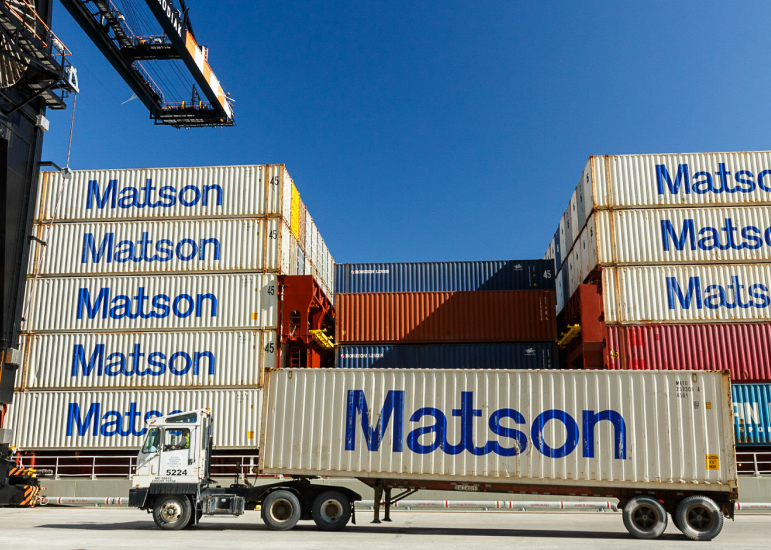Container Transportation: Your Link to Global Trade Networks
Introduction
While it is not necessarily the loudest element in the global trade ecosystem, container transportation actually plays a crucial role as one of the most powerful silent guardians that quietly allow you to move goods all around. The lifeblood of international commerce, literally holding the global trade networks together by facilitating the efficient and dependable movement of goods between economies and walks of life. We will take a closer look at how container transportation connects businesses to other businesses around the world, and delve into its evolution, the stakeholders and elements of change shaping its future landscape.
Containerized Traffic Then and Now
Containerization, in its simplest form, is a solution to the problem of how to move goods from one location to another. Containerization emerged in the 1950s with what later came to be known as the modern shipping container which is now defined as a standardised shipping unit. Container shipping industry has undergone a meteoric rise with technological advancements like GPS tracking and automated loading systems making it one of the most rapidly growing sectors in the last few decades.
Building Blocks of Global Free Trade Networks
International trade networks are a sophisticated structure, which consists of multiple dimensions that establish the base components including fundamental trade routes and corridors, international governing. Key to these networks is logistics and supply chain management to provide efficient, cost-effective transportation of goods.
Container — As a Common Shipping Unit Hack Concept Medium
Standardization of containers has been revolutionary in global trade. This in turn permitted the migration from one type of transport to another and intermodal stack train service that ensures ease in transferring containers amongst ships, trains, and trucks without handling individual goods. This has helped slash costs and also made global trade faster and more reliable.
Major Players in Container Transportation
Container transportation is inseparable from the lifeline of the leading shipping lines and their networks. They operate huge fleets of container ships that link ports in every corner of the globe; companies like CMA CGM. Ports and terminal operators are as crucial, investing in infrastructure themselves not only to offload the growing volume of containers. They also led to a rise of maritime alliances, where companies work together co-own these carriers and collaborate on routes to avoid overlap, thus increasing efficiency as well as service quality.
Container Shipping Infrastructure
The infrastructure needed to move containers is enormous, as indeed it includes port-infrastructure, inland container depots and rail networks. Container tracking and control: technology is key Advances in container management have been driven by sophisticated technology that can tell the user where the container is and what state it is in.
Container Conveyance as a Whole new Challenge in Transportation sector
Growing environmental consciousness has driven green shipping practices, with lighter fuels and ships designed to require less energy being adopted by shipping institutions. As digital systems are woven into the fabric of global trade networks, cybersecurity threats as well are a growing concern. Advancements in container design and ship technology are still ongoing, from Internet of Things (IoT) to blockchain technologies — all set to disrupt the industry even further.
Successful Container Transportation Initiatives; Case Studies
Case Studies The Panama Canal Expansion and the Suez Canal CrisisThe expansion of tropical regions will be discussed in this article as a case study. Meanwhile in container shipping, there has been a massive disruption caused by the Belt and Road Initiative (the development strategy of the Chinese government) that opened up new trade routes which helped drive a fresh wave of carrier growth due to the opportunity to enter new trades.
Conclusion
Container transport is much more than a tool to get the goods moved — it represents one of the mainstays of global relationships. Now, an industry that's always defined consumer culture continues to evolve and change in the face of new technology and a changing landscape of sustainable practices. Container shipping helps border-crossing capitalism run smoothly, and it will only play a greater role in the process as our to(has/hard)border fixes are extended or reimposed.
Table of Contents
- Introduction
- Containerized Traffic Then and Now
- Building Blocks of Global Free Trade Networks
- Container — As a Common Shipping Unit Hack Concept Medium
- Major Players in Container Transportation
- Container Shipping Infrastructure
- Container Conveyance as a Whole new Challenge in Transportation sector
- Successful Container Transportation Initiatives; Case Studies
- Conclusion

 EN
EN
 AR
AR
 DA
DA
 NL
NL
 FI
FI
 FR
FR
 DE
DE
 EL
EL
 IT
IT
 JA
JA
 PL
PL
 PT
PT
 RU
RU
 ES
ES
